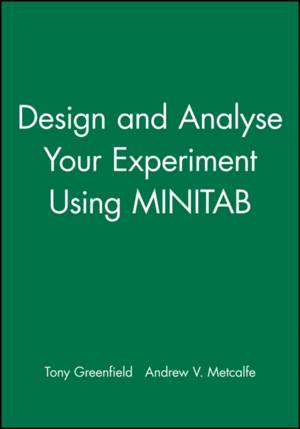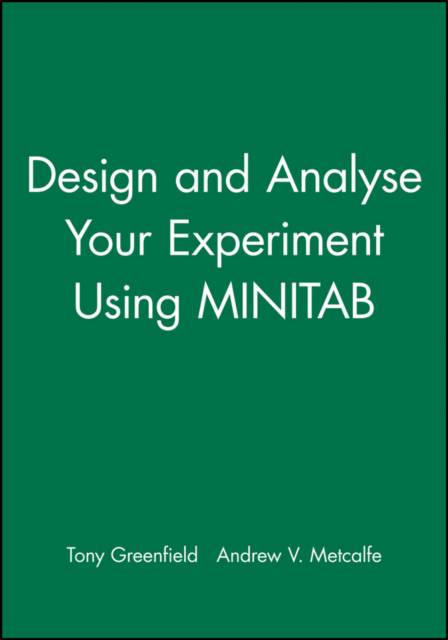
- Afhalen na 1 uur in een winkel met voorraad
- Gratis thuislevering in België vanaf € 30
- Ruim aanbod met 7 miljoen producten
- Afhalen na 1 uur in een winkel met voorraad
- Gratis thuislevering in België vanaf € 30
- Ruim aanbod met 7 miljoen producten
Zoeken
Design and Analyse Your Experiment Using Minitab
Tony Greenfield, Andrew V Metcalfe
Paperback | Engels
€ 88,45
+ 176 punten
Omschrijving
Progress in engineering and the physical sciences, agriculture and the biological sciences, and to some extent social science, depends on experiments. The design of such experiments is crucial. If they are poorly designed they will be inefficient and may lead to misleading conclusions. Nevertheless, many investigators and researchers in industry and universities are expected to design and analyze their own experiments. Even if investigators do have access to statistical advice, they will be expected to have some basic knowledge of the issues. This book aims to help. Covering all the most commonly used designs of experiments, the methods and the potential pitfalls are described in clear English. The techniques are introduced with case studies of practical significance. The cases are based on real experiments but are described in the context of three fictitious organizations: an engineering company, SeaDragon; a pharmaceuticals and chemicals manufacturer AgroPharm; and the Department of Social Studies at the University of Erewhon. All technical terms are defined and the mathematical development is restricted to that which is needed to use MINITAB.
To note: the text makes reference to the following URL: www.greenfieldresearch.co.uk/doe/data.htm.However, this URL has since been updated to the following: https: //web.archive.org/web/20161117011155/http: //www.greenfieldresearch.co.uk/doe/data.htm Please use this link to have access to the supplementary material.
To note: the text makes reference to the following URL: www.greenfieldresearch.co.uk/doe/data.htm.However, this URL has since been updated to the following: https: //web.archive.org/web/20161117011155/http: //www.greenfieldresearch.co.uk/doe/data.htm Please use this link to have access to the supplementary material.
Specificaties
Betrokkenen
- Auteur(s):
- Uitgeverij:
Inhoud
- Aantal bladzijden:
- 312
- Taal:
- Engels
Eigenschappen
- Productcode (EAN):
- 9780470711149
- Verschijningsdatum:
- 28/06/2010
- Uitvoering:
- Paperback
- Formaat:
- Trade paperback (VS)
- Afmetingen:
- 189 mm x 246 mm
- Gewicht:
- 557 g

Alleen bij Standaard Boekhandel
+ 176 punten op je klantenkaart van Standaard Boekhandel
Beoordelingen
We publiceren alleen reviews die voldoen aan de voorwaarden voor reviews. Bekijk onze voorwaarden voor reviews.








